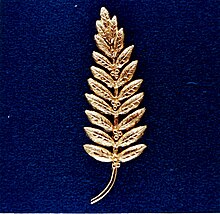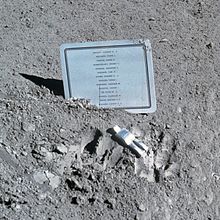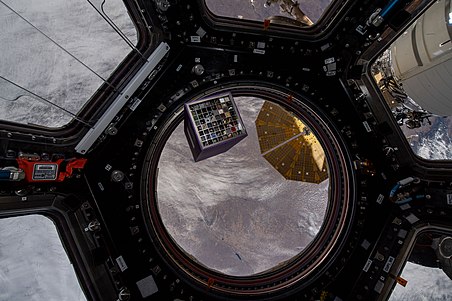
Space exploration is the use of astronomy and space technology to explore outer space. While the exploration of space is currently carried out mainly by astronomers with telescopes, its physical exploration is conducted both by uncrewed robotic space probes and human spaceflight. Space exploration, like its classical form astronomy, is one of the main sources for space science.

A lander is a spacecraft that descends towards, then comes to rest on the surface of an astronomical body other than Earth. In contrast to an impact probe, which makes a hard landing that damages or destroys the probe upon reaching the surface, a lander makes a soft landing after which the probe remains functional.
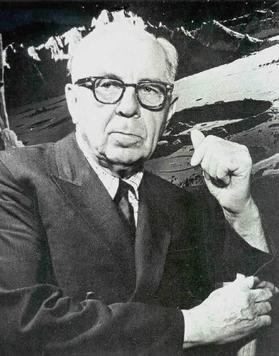
Chesley Knight Bonestell Jr. was an American painter, designer, and illustrator. His paintings inspired the American space program, and they have been influential in science fiction art and illustration. A pioneering creator of astronomical art, along with the French astronomer-artist Lucien Rudaux, Bonestell has been dubbed the "Father of Modern Space art".

The Constellation program was a crewed spaceflight program developed by NASA, the space agency of the United States, from 2005 to 2009. The major goals of the program were "completion of the International Space Station" and a "return to the Moon no later than 2020" with a crewed flight to the planet Mars as the ultimate goal. The program's logo reflected the three stages of the program: the Earth (ISS), the Moon, and finally Mars—while the Mars goal also found expression in the name given to the program's booster rockets: Ares. The technological aims of the program included the regaining of significant astronaut experience beyond low Earth orbit and the development of technologies necessary to enable sustained human presence on other planetary bodies.
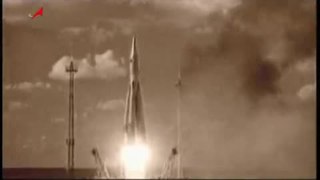
The Soviet space program was the national space program of the Union of Soviet Socialist Republics (USSR), active from 1955 until the dissolution of the Soviet Union in 1991.

The Shuttle–Mir program was a collaborative 11-mission space program between Russia and the United States that involved American Space Shuttles visiting the Russian space station Mir, Russian cosmonauts flying on the Shuttle, and an American astronaut flying aboard a Soyuz spacecraft to engage in long-duration expeditions aboard Mir.

Men Into Space is an American black-and-white science fiction television series, produced by Ziv Television Programs, Inc., that was first broadcast by CBS from September 30, 1959, to September 7, 1960. The series depicts future efforts by the United States Air Force to explore and develop outer space. The series' star, William Lundigan, played Col. Edward McCauley.
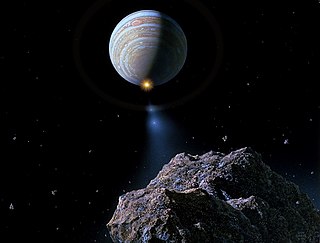
Don Davis is a space artist known for his portrayals of space-related subjects. His work is characterised by attention to detail and authentic portrayals based on what is known of the subject. Chesley Bonestell, considered by many to be one of the most accomplished practitioners of the space art genre, critiqued Davis' early paintings and encouraged him to pursue an artistic career.
The International Association of Astronomical Artists (IAAA), is a non-profit organization whose members implement and participate in astronomical and space art projects, promote education about space art and foster international cooperation in artistic work inspired by the exploration of the Universe.

Ron Miller is an American illustrator and writer who lives and works in South Boston, Virginia. He now specializes in astronomical, astronautical and science fiction books for adults and young adults.
Michael W. Carroll is an astronomical artist and science writer. His art has appeared in magazines such as TIME, National Geographic, and Astronomy, and has flown aboard the Russian space station Mir and NASA's Phoenix Mars lander. He is also a founding member of the International Association of Astronomical Artists.

Maria T. Zuber is an American geophysicist who is the vice president for research at the Massachusetts Institute of Technology, where she also holds the position of the E. A. Griswold Professor of Geophysics in the Department of Earth, Atmospheric and Planetary Sciences. Zuber has been involved in more than half a dozen NASA planetary missions aimed at mapping the Moon, Mars, Mercury, and several asteroids. She was the principal investigator for the Gravity Recovery and Interior Laboratory (GRAIL) Mission, which was managed by NASA's Jet Propulsion Laboratory.

Spaceflight began in the 20th century following theoretical and practical breakthroughs by Konstantin Tsiolkovsky, Robert H. Goddard, and Hermann Oberth, each of whom published works proposing rockets as the means for spaceflight. The first successful large-scale rocket programs were initiated in Nazi Germany by Wernher von Braun. The Soviet Union took the lead in the post-war Space Race, launching the first satellite, the first animal, the first human and the first woman into orbit. The United States would then land the first men on the Moon in 1969. Through the late 20th century, France, the United Kingdom, Japan, and China were also working on projects to reach space.
Don Dixon is an American astronomical artist practicing space art in the tradition of Chesley Bonestell.

Robert A. Citron, often called Bob Citron was an American entrepreneur and aerospace engineer who was born in Brooklyn, New York, and educated at the University of the Philippines and aeronautical engineering from Northrop University (1953–1959). Citron helped establish and manage the Smithsonian Astrophysical Observatory's Operation Moonwatch and Precision Optical Satellite Tracking Programs (STP) after the launch of Sputnik I in 1957. He founded or co-founded five companies dealing with documentary film production, publishing, space research and space logistics support, reusable satellite launch systems, and Lunar transportation and logistics. Citron also started three nonprofit foundations dealing with scientific field research. He died on January 31, 2012, at his home in Bellevue, Washington, at the age of 79, due to complications from prostate cancer.

The National Aeronautics and Space Administration is an independent agency of the U.S. federal government responsible for the civil space program, aeronautics research, and space research. Established in 1958, it succeeded the National Advisory Committee for Aeronautics (NACA) to give the U.S. space development effort a distinct civilian orientation, emphasizing peaceful applications in space science. It has since led most of America's space exploration programs, including Project Mercury, Project Gemini, the 1968–1972 Apollo Moon landing missions, the Skylab space station, and the Space Shuttle. Currently, NASA supports the International Space Station (ISS) along with the Commercial Crew Program, and oversees the development of the Orion spacecraft and the Space Launch System for the lunar Artemis program.








